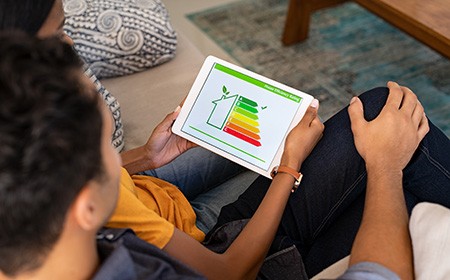What is a good EPC rating?
‘A’ is a score of 92 – 100, meaning the property is very efficient and has lower running costs. At the bottom of the scale is ‘G,’ with a score of 1 – 20, meaning it’s not energy efficient and has higher running costs. The average energy efficiency rating for a dwelling and Wales is band D (rating 60) (Source: Office for National Statistics).
If you're buying a new home, an EPC certificate could help you compare properties you might be looking at, so make sure you ask to see one.


